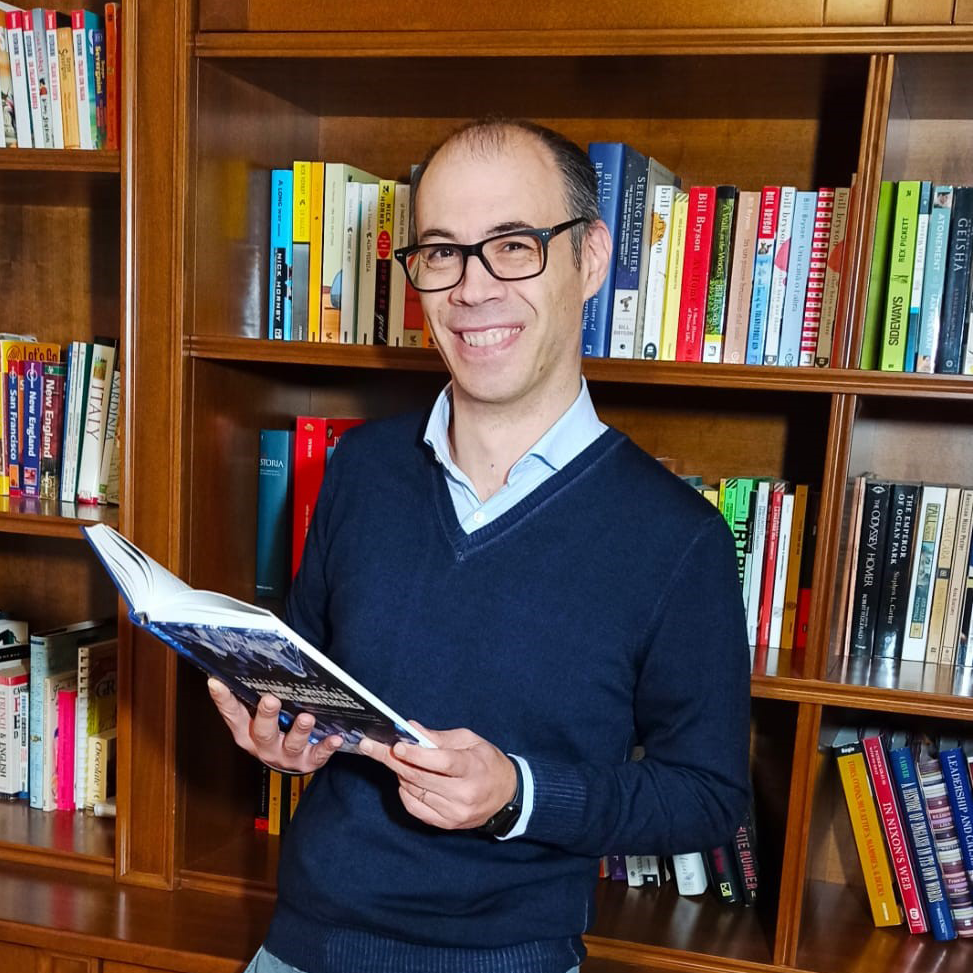Vincenzo Galdi
University of Sannio, ItalyFor outstanding and sustained contributions to modeling wave interaction with artificially engineered materials, including nonlocal, non-Hermitian, Multiphysics, and time-varying scenarios.

Vincenzo Galdi works with metamaterials, a field where he says, “the line between a breakthrough and wishful thinking is very thin.” These artificially engineered materials have many applications, with new ones coming up each day, but they are incredibly challenging due to their complexity. Vincenzo focuses on theory, and he and his lab work to create materials with properties that aren’t found in natural materials. With two colleagues and two former students, he recently founded a spin-off company, MANTID srl, which aims to commercialize metamaterials for applications in antennas for radio frequency identification, logistics, and virtual reality.
There are two fascinating projects of which Vincenzo is incredibly proud. First was his work with Optica Fellows Nader Engheta and Andrea Alù and their groups, which proposed that metamaterials could be used to perform mathematical operations. They worked to show that it was possible to engineer specific distortion of a light wavefront in a useful way to perform operations similar to those used in edge detection for facial recognition. This work was successful and has inspired many experiments to advance the concept. Another favorite project was the LIGO experiment to detect gravitational waves. Vincenzo was involved in designing the optical mirrors for the interferometer, a small but essential part of the project. He comments that the discovery of gravitational waves was “a technological effort of huge proportion in so many disciplines…it was a moonshot, and I think it is my favorite discovery.”
Vincenzo became interested in metamaterials during his master’s degree work, which he started in electrical engineering. In his classes on electromagnetics, he learned about Maxwell’s equations, a set of four equations that describe the generation and interaction of electromagnetic waves. Vincenzo was fascinated by their simplicity and significant impact on so many different fields that he wanted to continue pursuing the area. He ended up completing his master’s thesis and PhD in applied electromagnetics at the University of Salerno, Italy. His enthusiasm for the field shines when he speaks about the future: “Now it is possible to introduce some reconfigurability and programming like you would program a computer. With metamaterials, you can also include some intelligence in the system…there is a convergence between what you think of as hardware and software into a single thing.”
Vincenzo has had the support of mentors who proved pivotal to his success throughout his career and are also Optica Fellows. His master’s and PhD advisor, Innocenzo Pinto, paved the way for Vincenzo to pursue a career in academia. Innocenzo provided the contacts and support needed to become an independent researcher. The late Leo Felsen, who supervised Vincenzo’s postdoctoral work at Boston University, USA, provided a vigorous training program that made three years feel like ten in terms of productivity and knowledge gained. Vincenzo was somewhat in awe of Leo, who he called a “living legend.” He says of his mentors, “I owe them my career.”
Vincenzo stresses the importance of mentors for young scientists. He comments that scientists have been trained in the same way since renaissance times, where young people worked directly with a master to learn the craft. Still, today it is vital that young scientists choose the right mentor and find a healthy environment. He also emphasizes the importance of being creative in science, though this is not always possible to teach. He learned his recipe for creativity from an Italian chef who said something like, “If you want to be creative, learn all the possible techniques, and once you master them, you have to forget them.” Vincenzo insists that creativity is one of the most essential traits in his field and teaches his mentees this concept through his example.
Photo Credit: Vincenzo Galdi
Profile written by Samantha Hornback
